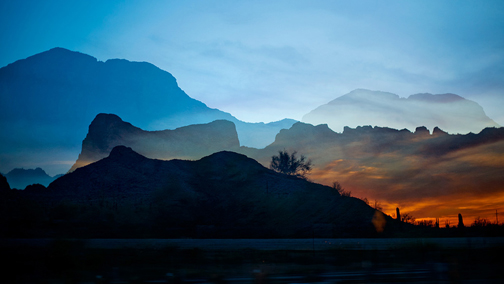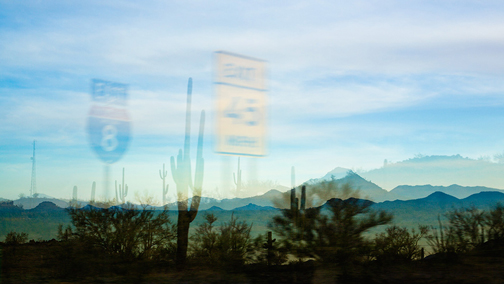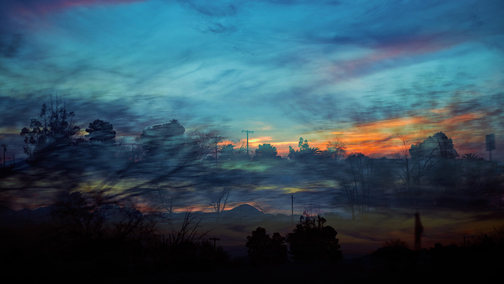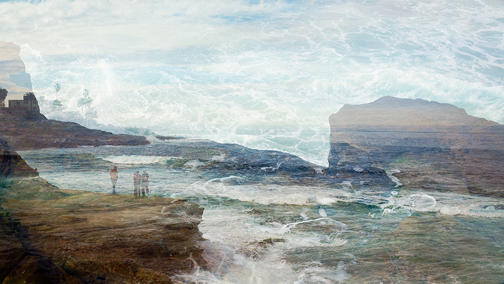Los Angeles based photographer Ina Jungmann sat down with me to discuss her influences growing up on three continents and the release of her new photo collection “Sleeping Indian – From California to New Mexico.”
LR: I understand you moved around a lot. Can you tell us about your experiences?
Jungmann: I was born in Mannheim, Germany in 1985, but at the age of three my family moved to Nagoya, Japan for about six years before we moved back to Germany in 1995. Then in 1999 we moved to Santa Monica, California. In 2004 I enrolled in UCLA and got my bachelor degree in Visual Arts.
At the time it was not always easy as I didn’t always feel like I fit in. The educational style in Japan was not compatible with Germany. However, moving to Santa Monica was great. Santa Monica High School is a very diverse school and I had friends from different parts of the world and in school I was able to use the skills that learned in Japan and Germany. I took art and photography classes and was able to learn English with classmates who were at the same level of English as I was.
Looking back on my experience, living in these three distinct societies greatly benefited me. Meeting people with different and diverse cultures taught me that there is no one way to do things and I was able to learn from different views and experiences. Which I feel is kind of a freedom I acquired.

Twilight Hills by Ina Jungmann
From Sleeping Indian – From California to New Mexico Collection
Taken in 2014 On the way from Arizona to New Mexico
Jungmann: I got a good start with the art work we did in Japanese kindergarten, making great things from all kinds of materials. The difficulty of having to learn another language with every move made me uneasy with verbal communication. The good side of this was that it made me explore the world visually. Art was the only thing that was universal and it was something that I always wanted pursue.
LR: Your parents instilled a love of art, can you talk about this?
Jungmann: My father is an artist and photographer and my mother is an art historian. We always went to exhibitions and had many art and photography books at home. So that influenced me a lot.
LR: I understand that you have deep ties to the Japanese culture. What in particular draws you to the culture, and does it influence your work?
Jungmann: Japanese culture has influenced me a great deal. The patience, concentration, and detail oriented. Everything is thoughtfully designed and handled. People pay attention even to the simplest things, but are also very playful. German and American culture can be very serious. I like the abstract component of East Asian art that sparks your imagination. In my photography I like to play with reality and abstraction.
LR: You worked with three renown photographers: James Welling, Miyako Ishiuchi, and Rudolf Schäfer, can you tell us if there’s something you learned from each of them?
Jungmann: At UCLA and mainly studied with James Welling, but in the summer of my senior year I went to Japan for an internship with Miyako Ishiuchi, who was a friend of my family and a photographer I greatly admire. After UCLA I studied with Rudolf Schäfer at Burg Giebichenstein University of Art and Design in Halle, Germany.
What intrigues me about each of them are that they are very different from each other. Jim’s experimental and abstract/conceptual. Rudolf is knowledgeable about photography techniques and professionalism. Miyako has personality and attitude to photography. She is a strong woman who does her thing. I was inspired listening to and watching how she worked. For example, she keeps working with 35 mm analog camera, and never uses a digital camera. She says she likes the dots in the grain in analog.
I work with digital but I learned that photography is not about working with the next best technology and keeping up with every trend. With Rudolf I learned how important it is to know about the techniques and technology in photography and produce ones work in the best quality possible. Miyako, on the other hand, taught me that it is freedom to work in the medium that you love and want to work with. Jim taught me to keep at it and keep going, experiment and push the medium further.
LR: Are there any techniques that you use to create your own unconventional approach to the art of photography?
Jungmann: I try to overcome the limits of photography through experiments and abstraction. I see myself as the opposite of a photo journalist who captures “reality.” I rather want to explore the ways we perceive our surroundings.
On The Road by Ina JungmannFrom Sleeping Indian – From California to New Mexico Collection
Taken in 2014 On the way from California to Arizona
LR: Are there any specific techniques you incorporate in your work?
Jungmann: A technique that I always come back to is multiple exposures. I have experimented with manipulation in the dark room and with digital files since I started working with photography in high school. I have tried to sandwich negatives in the dark room; have tried multiple exposures in the camera, analog and digital. And I love to work with Photoshop and overlay layers of images. Other then that I like to photograph whatever comes to me. I like walking in new cities, counties, districts and photograph the experiences and feelings that I had in these areas.
LR: Let’s talk about your new collection ‘Sleeping Indian – From California to New Mexico,’ explain the title and what it means to you?
Jungmann: When I went to New Mexico in 2014, there was a mountain known as “Sleeping Indian.” It took me a while to see it but when I looked at the shape of the mountain it really looked like a native American sleeping on his back covered in a blanket. It was such fun to see something like this in a landscape, like you would look at clouds and see objects in them. I also believe that a landscape absorbs the history or the life of the people who live there. Like stories or tales that the landscapes seems to tell you.
In Transit by Ina JungmannFrom Sleeping Indian – From California to New Mexico Collection
Taken in 2014 – Arizona at dusk
LR: How much of this collection is done in camera and how much is manipulated by other means?
Jungmann: With this series, the multiple exposures were done in-camera only. This was very important to me that nothing was manipulated in Photoshop. I wanted to see how far I can go with the multiple exposure feature in my camera. I like the element of surprise but it definitely also captured the moments that I felt driving through and visiting these places.
LR: What was it about the landscape of the U.S. western states that inspired you to put this collection together?
Jungmann: There is this wide and open landscapes and its constant change in views. The U.S. national parks, such as Saguaro National Park and White Sands National Monument, are so overwhelming. I think that my multiple exposures gives you that impression. Also, I am interested in form, composition, and color. Just like Japanese ink painters I want to show the timelessness of the landscape, the shape that goes beyond the moment.
LR: What made you choose the printing process and how does it enhanced the collection?
Jungmann: Usually I like textured looks and the elegance of framed prints. But I found that it didn’t work for this collection. I’m mounted the prints on aluminum with a wooden backing which gives it the illusion that the landscapes are floating away from the wall. I chose the Fuji Flex paper because it has good contrast and a radiant/shiny look and it gives back the same color intensity that the images should have. I felt that to print them small and restrict them in a frame, would not do them justice which is why I decided to print them in larger sizes.
La Jolla View by Ina JungmannFrom Sleeping Indian – From California to New Mexico Collection
Taken in 2014 – La Jolla in San Diego, California
See the entire 22 images that make up the Sleeping Indian – From California to New Mexico Collection
Sign-up for our newsletter and get news, updates and special offers
For lovers of Vintage Posters, Photography and Art — Limited Runs!
Limited Runs, the premier destination for discovering and buying the best in original vintage posters, print art and fine art photography, continues to add new items to the site every day and each week we feature some of our latest additions of original vintage film, advertising and rock posters, art prints and photography.
Follow Limited Runs on:








